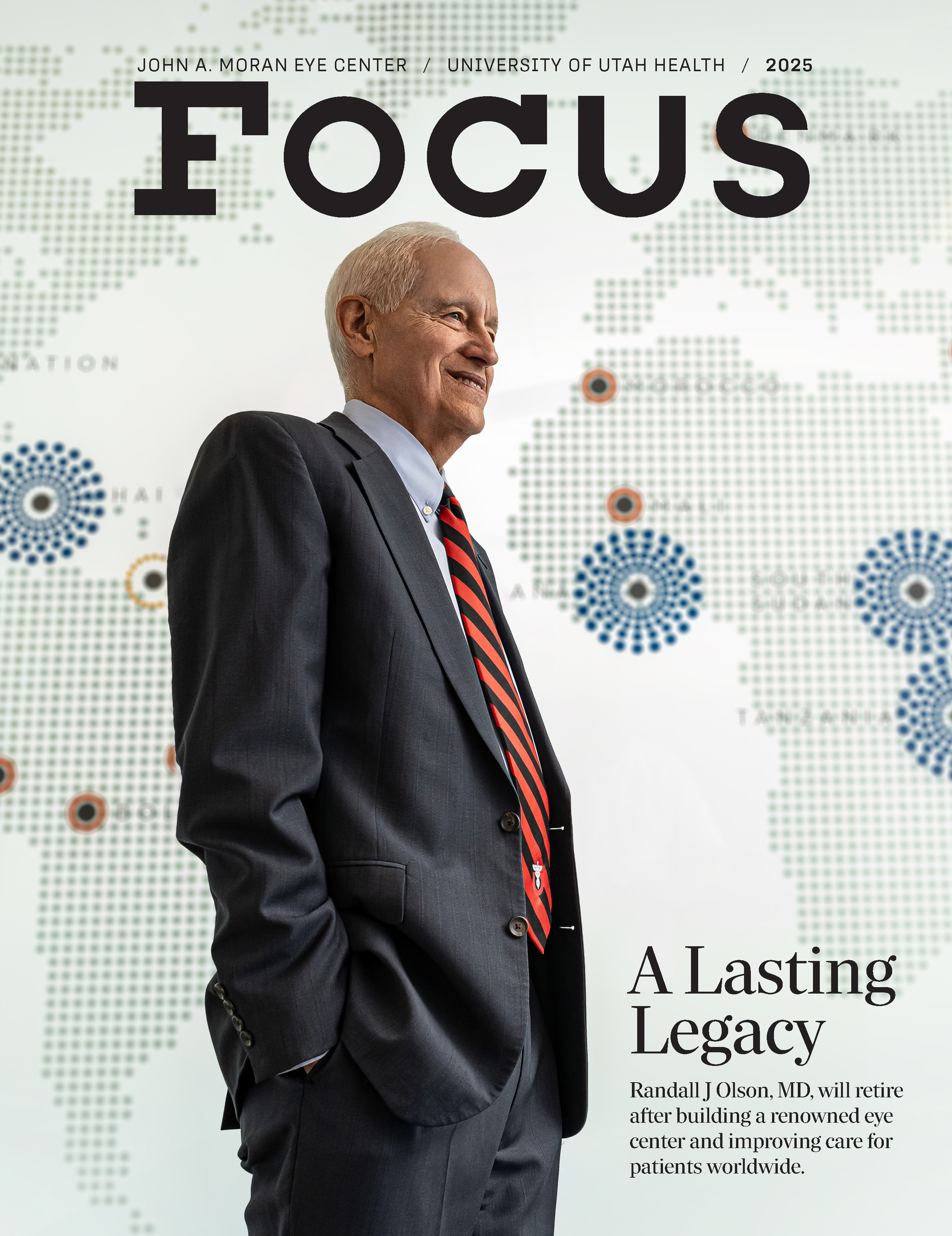
The ARCS scholarship program celebrates 15 years of advancing innovative research at Moran.

The chance to investigate a little-known part of the eye that may someday save sight for many worldwide.
That’s what a scholarship from the Achievement Rewards for College Scientists (ARCS) Foundation of Utah meant to John A. Moran Eye Center clinician-scientist Eileen Hwang, MD, PhD, during her residency starting in 2014.
“Having that financial boost allows you to get started and go on and get other funding to pursue things that interest you and are not necessarily based on what someone else’s lab is already funded to do,” she said. “It’s an amazing gift that lets you go in a unique direction.”
The ARCS Foundation of Utah in 2024 marked 15 years of enhancing America’s national and local capacity for research and innovation in science and technology.
At the University of Utah, the group provides scholarships to students in two departments: the Moran Eye Center and the College of Engineering. ARCS awards $15,000 annually to incoming Moran residents to pursue research, hoping they
will choose careers that continue their scientific investigations. Moran matches the award for the following two years of the scholar’s residency, providing a total of $45,000.
For Hwang, the ARCS award allowed her to investigate the vitreous, the transparent gel that fills the eyeball and changes as we age. While changes in the vitreous can cause potentially blinding retinal detachments, little is known about it compared with other parts of our eyes. Since it is 99.8% water, many methods scientists use to study other parts of the eye don’t work well on the vitreous.
Hwang’s interest in the vitreous started as a student at the Robert Wood Johnson Medical School in New Jersey, where she worked with a lab investigating inherited diseases caused by collagen mutations. Type II collagen is critical to providing structure in the vitreous, and Hwang wondered how changes in the vitreous as people age might cause retinal detachments and other visual conditions, like floaters.
After her residency at Moran, Hwang completed a retina fellowship at the Medical College of Wisconsin, where she developed the clinical skills to repair retinal detachments while continuing her research on how to prevent them.
Now back at Moran, Hwang is collaborating with Brittany Coats, PhD, with the University of Utah Department of Mechanical Engineering, to develop imaging and biochemistry techniques for analyzing vitreous structure.
“We are the first ones to really tackle this challenge by coming up with a way to accurately image the structure of the vitreous using a confocal microscope,” said Hwang. “We found that in some areas of the eye, there is higher density of the vitreous and lower density of the vitreous, so we can explore what is changing with age and why.”
Two Moran ARCS Scholars Named for 2025
Incoming Moran Eye Center residents Shima Dehghani, MD, and Jenna Jensen, MD, have been awarded ARCS research scholarships for 2025-2026.
Dehghani earned her medical degree with high distinction from Shahid Beheshti University of Medical Sciences in Iran. She completed her ophthalmology residency at Tehran University of Medical Sciences, graduating with honors. She then completed a postdoctoral research fellowship at Schepens Eye Research Institute, affiliated with Harvard University and Massachusetts Eye and Ear, focusing on ocular immunology, corneal neovascularization, and transplant immunity. Dehghani also completed a uveitis fellowship at Bascom Palmer Eye Institute.
As a resident at Moran, she plans to expand her research and explore systematic approaches to optimizing high-quality ophthalmic care.
Jensen earned her medical degree and a Bachelor of Science in Biomedical Engineering from the University of Utah.
Her clinical research has included exploring patterns of X-linked retinitis pigmentosa, a group of rare eye diseases affecting the retina, and the prevalence of astigmatism in children in the Navajo Nation. Jensen has also focused on work that empowers women in the ophthalmology field, including writing a book chapter with Moran female physicians about eye conditions found in older women.
As a resident at Moran, she plans to continue her work exploring the relationships between genetics and ocular disease and unrecognized or under-treated eye disease among women.


